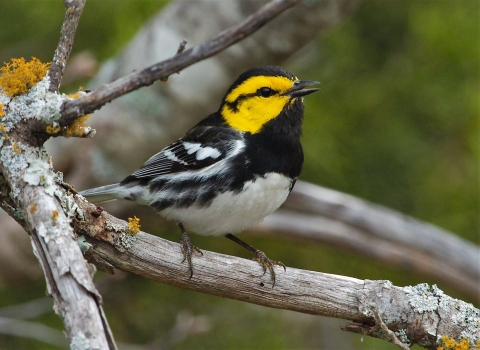We at the U.S. Fish and Wildlife Service are proposing to designate critical habitat for four species of endangered freshwater mussels. Habitat for the rayed bean, sheepnose, snuffbox and spectaclecase mussels can be found in 17 states in the central and eastern United States. We are proposing to designate a total of 3,974 river miles of occupied habitat, where many of the units for each individual species overlap. This proposal opens a 60-day public comment period.
Critical habitat is an area that contains essential habitat features for the survival and recovery of species listed under the Endangered Species Act. Should this rule be finalized, the designation of critical habitat triggers coordination with federal agencies and projects using federal funding. The designation will not affect activities on private lands unless the activity is funded or authorized by a federal agency.
All four mussel species were listed as endangered in 2012 under the Endangered Species Act, which means they are in danger of extinction. Threats to these mussels include destruction or changes to their riverine habitat, including dam construction and channelization, along with impacts from pollution and invasive species invasive species
An invasive species is any plant or animal that has spread or been introduced into a new area where they are, or could, cause harm to the environment, economy, or human, animal, or plant health. Their unwelcome presence can destroy ecosystems and cost millions of dollars.
Learn more about invasive species .
The rayed bean is a small mussel, measuring only about 1.5 inches. The rayed bean lives up to 15 years. This species, once found in at least 115 streams, rivers and other waters, now occurs in only 37 streams and one lake in Indiana, Kentucky, Michigan, New York, Ohio, Pennsylvania, Tennessee and West Virginia, along with Ontario, Canada. We are proposing to designate 560 river miles in 15 units as critical habitat for the rayed bean.
The sheepnose mussel can grow up to 5.5 inches and can live up to 30 years. They once occurred in 79 streams and rivers, including one canal, but are now found in only 22 waterways in Alabama, Illinois, Indiana, Iowa, Kentucky, Minnesota, Mississippi, Missouri, Ohio, Pennsylvania, Tennessee, Virginia, West Virginia and Wisconsin. We are proposing to designate approximately 801 river miles in 11 units as critical habitat for the sheepnose.
Snuffbox mussels are small, growing to less than 3 inches and living up to 20 years. These mussels once inhabited at least 210 streams, rivers and other waters, but are now known to occur in only 85. Their current range includes Alabama, Arkansas, Illinois, Indiana, Kentucky, Michigan, Minnesota, Missouri, Ohio, Pennsylvania, Tennessee, Virginia, West Virginia, Wisconsin and Ontario, Canada. We are proposing to designate approximately 2,427 river miles in 38 units as critical habitat for the snuffbox.
Spectaclecase mussels can reach 9 inches in length and live for more than 100 years. Once found in 61 rivers and streams, they now inhabit 40 waterways; populations have declined by an estimated 60 percent. They occur in Alabama, Arkansas, Georgia, Illinois, Iowa, Kentucky, Minnesota, Mississippi, Missouri, Ohio, Tennessee, Virginia, West Virginia and Wisconsin. We are proposing to designate approximately 1,143 river miles in 12 units as critical habitat for the spectaclecase.
The proposal to designate critical habitat for these four species will appear in the Federal Register on December 13, 2024. A 60-day comment period opens December 13, 2024 and closes February 11, 2025. Information on how to submit comments can be found on regulations.gov by searching docket number FWS-R3-ES-2024-0144.



